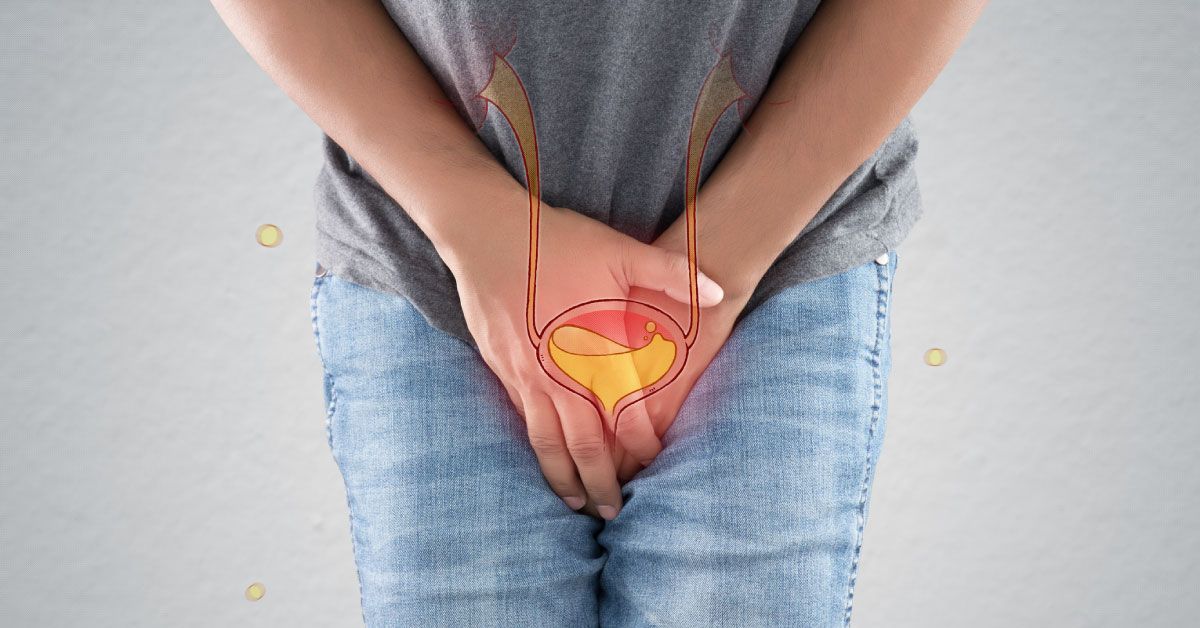Overactive Bladder and Urgent Urinary Incontinence
Bladder and its function in the urinary system
The urinary bladder is an organ of the urinary system with function of storing urine produced in the kidneys. It is a smooth muscle organ with the ability to store between 650 to 750 mL of urine. The bladder is located at the bottom of the abdominal cavity.
Urine is produced in the kidneys and two tubes called ureters to the bladder descend. The bladder stores urine, allowing urination to be infrequent and controlled.
Overactive Bladder - What is it?
It is estimated that around 17% of the European population over 40 years of age suffers from overactive bladder. It is not a disease, but a set of symptoms that affects the behavior of this organ. It is a neuromuscular disorder, in which the bladder wall muscle contracts inappropriately during its filling, compromising the storage phase. As a result, those suffering from this problem may experience a negative impact on their quality of life. Overactive bladder syndrome does not choose gender or age, although it is more common in women from 60 years of age.
The overactive bladder is not, from a clinical point of view, considered a disease. Rather, it is a set of symptoms, including the sudden urge to urinate and the involuntary loss of urine (also known as urinary incontinence).
The overactive bladder consists of a contraction, or sudden involuntary and sudden tightening, of the bladder wall muscle, even if the volume of urine is reduced.
Symptoms of Overactive Bladder
Frequent , intense and urgent need to urinate. This is the main and most common symptom of overactive bladder.
They are usually a set of symptoms that cause this condition such as the urgent need to urinate, with or without incontinence (involuntary loss of urine), usually accompanied by frequency and increase in the number of nocturnal urinations (nitururia), in the absence of infection or other disease that may explain these symptoms.
Causes for Overactive Bladder
The causes for overactive bladder are still unknown. Even so, it is known that some conditions may contribute to some symptoms of this problem:
– Stroke and multiple sclerosis
– Diabetes
– Medicines that increase urine production
– Acute urinary tract infections
– Tumors or stones in the urinary system
– Excessive consumption of caffeine or alcohol
– Decline in cognitive function due to aging
– Incomplete emptying of the bladder
Overactive Bladder - Prevention
There are some activities that may reduce the risk of developing overactive bladder: regular practice of exercise, reduced consumption of caffeine and alcohol, not smoking, treatment and control of chronic diseases, such as diabetes, which may contribute to the overactive bladder and the performance of exercises for strengthening muscles pelvic stooes.
As a general rule, overactive bladder syndrome can be controlled with some lifestyle modifications. However, when this is not enough, the doctor may choose to outline a specific treatment.
Overactive Bladder - Treatment
There are several medicines that can be used, with higher or lesser efficacy and higher or lower rate of side effects. They are the first line of treatment of incontinence sums of Overactive Bladder.
Examples of this are direct anticholinergic medicinal products or also called Antimuscarinics (e.g. Solifenacin, Trospio chloride and Oxybutynin).
Editorial Note: This page and all other contents presented in lifewell.pt are prepared and reviewed by medical experts in Portugal.


